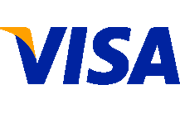HPWORLD 2004 -- Noteworthy OpenVMS Technical News
Recently returned from HPWORLD 2004 in Chicago, I can report that there is interesting news in the OpenVMS arena. On the technical front, much of the news was expected, with OpenVMS 8.2 for both Alpha and Itanium having entered field test at the end of July, as projected. OpenVMS VAX 8.2 will be a few months later in the cycle, due to scheduling reasons.
On product line issues, the strong suggestion is that the economics of OpenVMS on Integrity servers, the proper name for the HP IA-64-based systems, will be extremely attractive. In addition, there are strong hints that even more positive information remains to be unveiled.
The technical improvements on version 8.2, on the 64-bit platforms, provide major enhancements for multiprocessor environments. Ongoing attention to multiprocessor scalability, and the resulting changes, such as the redistribution of spinlock use from IOLOCK8 to dedicated device-specific spinlocks, greatly reduces spinlock contention. Contention for shared spinlocks in high IO activity has often been a limit on multiprocessor scaling.
Other changes are more visible to a far wider audience. Some of these changes debuted with the 7.3-2 intermediate release, others are totally fresh for 8.2. The new release includes support for the latest generation of Gigabit Ethernet adapters, enhancements to the C/C++ Run Time library, and other internals improvements. In some cases, these changes remove restrictions (e.g. DCL symbols may now contain up to 8192 characters, a substantial increase from the prior limit of 255 characters). The MONITOR program has also been re-written, as opposed to translated from the VAX image.
For those unsure of image translation technology's viability in migrating applications from Alpha to Itanium, the history of MONITOR is telling. It provides a counter-example to the old saw that "image translation cannot work". Until now, MONITOR on Alpha has been a translated version of the MONITOR image running on the VAX. Millions of OpenVMS Alpha users have use MONITOR on a daily basis, with no awareness that it was a translated image. For more than a decade, successive versions of MONITOR were translated from VAX to Alpha.
There will also be substantial advances in mass storage management, including:
- Host-based Mini-Merge
- Dynamic Volume Expansion
- Dissimilar Device Support for Volume Shadowing
- Enhancements to multi-site support in Host-based Volume Shadowing
Used in concert, these features reduce operational limitations. Combining Host-based volume shadowing, dissimilar device support for volume shadowing, and dynamic volume expansion makes it possible to seamlessly migrate users, without interruption, to larger volumes. There is no need to dismount disks, or otherwise interfere with normal system operation and use. The need to expand or change mass storage can be realized without system shutdowns, a useful feature in 24x7x365 systems.
In the Business practices arena, there are substantial changes promised with OpenVMS licensing on Integrity. Most significantly, OpenVMS will be licensed on a per-processor basis, with an unlimited number of users. Additionally, software licenses will be packaged on an ensemble basis, with the different ensembles referred to as Operating Environments. The smallest ensemble is the Foundation Operating Environment, which includes:
- OpenVMS (unlimited user)
- DECnet (Phase IV and V)
- TCP/IP Services
- Motif
- Secure WWW Server (Apache), and
- the Internet technologies suite (JAVA, XML, SOAP, NetBeans, etc.)
Beyond the basic ensemble is the Enterprise Operating Environment, which expands the Foundation Operating Environment with the addition of:
- RMS Journaling
- Volume Shadowing
- DECram
- OpenVMS Management Station
- Enterprise Capacity Planner, and
- Availability Manager
The third ensemble, the Mission Critical Operating Environment expands the Enterprise Operating Environment with the addition of:
- OpenVMS Clusters, and
- Reliable Transaction Router Backend
A copy of the diagram illustrating which products are included in a presentation on the HP OpenVMS www site at http://h71000.www7.hp.com/openvms/OpenVMSproductdirections.htm, on Slide 40.
While the Foundation Operating Environment will be obligatory, the products included in the enhancement ensembles remain available on an individual basis. The pre-defined Enterprise Operating Environment and Mission Critical Operating Environment ensembles merely reduce the paperwork and cost of dealing with common collections of software components. Individual products remain available to enhance an Operating Environment in situations where a basic Operating Environment is missing a needed product. For example, if VMSclusters are needed, they are available as additions to the Foundation or Enterprise Operating Environments without requiring the purchase of the high-end Mission Critical Operating Environment, just as Volume Shadowing is a potential addition to the Foundation Operating Environment.
The choice of whether to purchase a more embracive Operating Environment, or a basic Operating Environment with additional layered products is an administrative and economic decision. Different customers will come to different conclusions on the appropriate purchase depending on their finances, plans, and organizational politics. Customers will be able to choose an alternative that dramatically reduces the volume of PAKs for their base environments, together with a simplified policy on processor tiers. The simplifications in license administration and cost will improve on all of OpenVMS's impressive advantages.
These packages and pricing changes, together with OpenVMS's leadership position in Total Cost of Ownership (TCO) bodes well for the future. (see the February 2004 whitepaper by TechWise, available from the OpenVMS WWW Site at http://h71000.www7.hp.com/openvms/whitepapers/tco_clusters/TCO_WP_Feb04.pdf).
The developments in technical and business practices on Integrity servers underscore the fundamental truth about OpenVMS. OpenVMS is an operating system for which processors have been designed, first the VAX and then the Alpha, not a system designed for a particular processor. The assimilation of Itanium, with little fundamental difficulty, underscores this simple truth. The strength of OpenVMS is that the issues in porting to IA-64 from Alpha are, for most applications, straightforward. The business practices instituted by HP are also along the lines I predicted in my response to the initial June 2001 announcement (see http://www.rlgsc.com/alphaitanium.html).











![Validate my Atom 1.0 feed [Valid Atom 1.0]](http://images.rlgsc.com/logos/valid-atom.png)
![Validate my RSS feed [Valid RSS]](http://images.rlgsc.com/logos/valid-rss.png)

